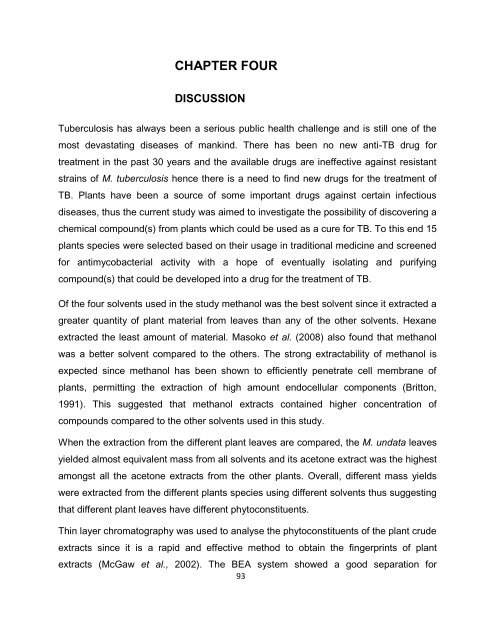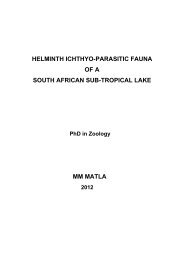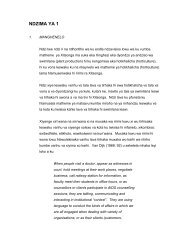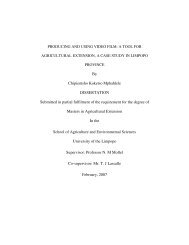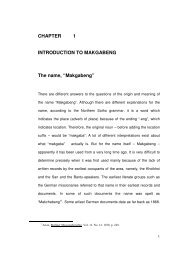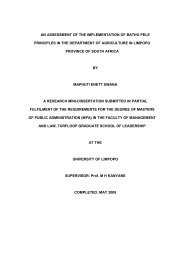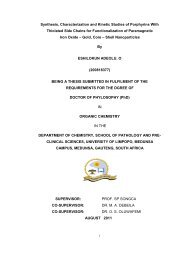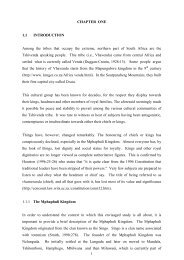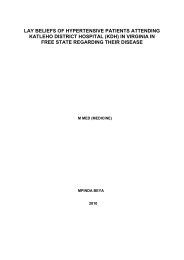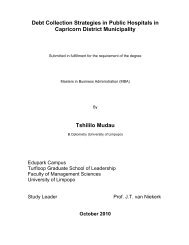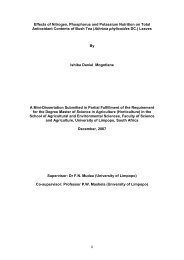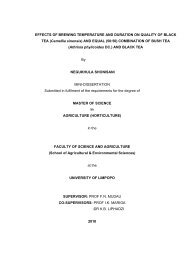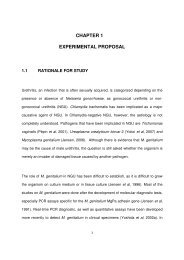Mmushi T MSc (Microbiology).pdf
Mmushi T MSc (Microbiology).pdf
Mmushi T MSc (Microbiology).pdf
You also want an ePaper? Increase the reach of your titles
YUMPU automatically turns print PDFs into web optimized ePapers that Google loves.
CHAPTER FOUR<br />
DISCUSSION<br />
Tuberculosis has always been a serious public health challenge and is still one of the<br />
most devastating diseases of mankind. There has been no new anti-TB drug for<br />
treatment in the past 30 years and the available drugs are ineffective against resistant<br />
strains of M. tuberculosis hence there is a need to find new drugs for the treatment of<br />
TB. Plants have been a source of some important drugs against certain infectious<br />
diseases, thus the current study was aimed to investigate the possibility of discovering a<br />
chemical compound(s) from plants which could be used as a cure for TB. To this end 15<br />
plants species were selected based on their usage in traditional medicine and screened<br />
for antimycobacterial activity with a hope of eventually isolating and purifying<br />
compound(s) that could be developed into a drug for the treatment of TB.<br />
Of the four solvents used in the study methanol was the best solvent since it extracted a<br />
greater quantity of plant material from leaves than any of the other solvents. Hexane<br />
extracted the least amount of material. Masoko et al. (2008) also found that methanol<br />
was a better solvent compared to the others. The strong extractability of methanol is<br />
expected since methanol has been shown to efficiently penetrate cell membrane of<br />
plants, permitting the extraction of high amount endocellular components (Britton,<br />
1991). This suggested that methanol extracts contained higher concentration of<br />
compounds compared to the other solvents used in this study.<br />
When the extraction from the different plant leaves are compared, the M. undata leaves<br />
yielded almost equivalent mass from all solvents and its acetone extract was the highest<br />
amongst all the acetone extracts from the other plants. Overall, different mass yields<br />
were extracted from the different plants species using different solvents thus suggesting<br />
that different plant leaves have different phytoconstituents.<br />
Thin layer chromatography was used to analyse the phytoconstituents of the plant crude<br />
extracts since it is a rapid and effective method to obtain the fingerprints of plant<br />
extracts (McGaw et al., 2002). The BEA system showed a good separation for<br />
93


